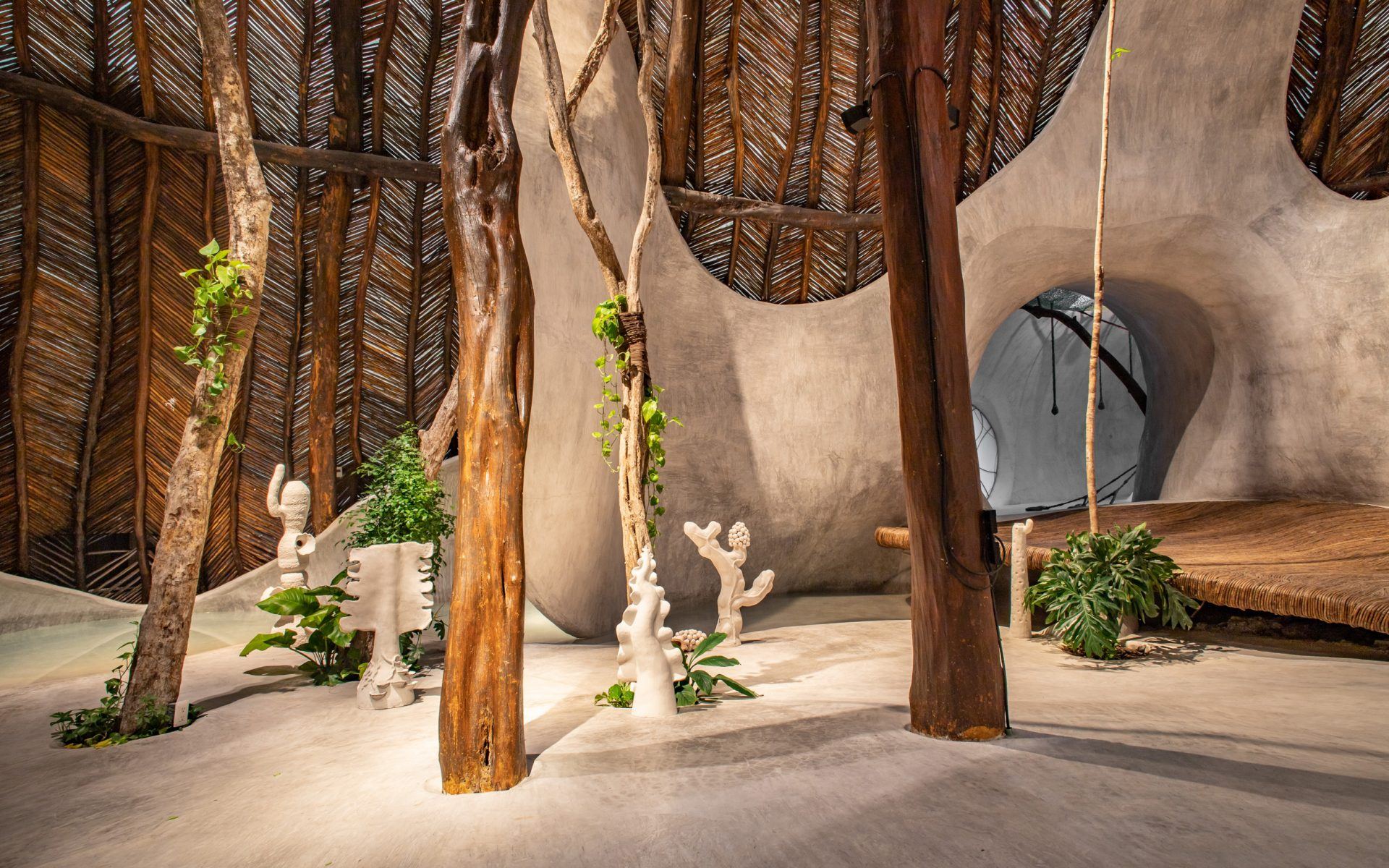

Tour an Otherworldly Museum in the Mexican Jungle
At Azulik in Tulum, organic architecture and site-specific exhibitions propose a return to nature
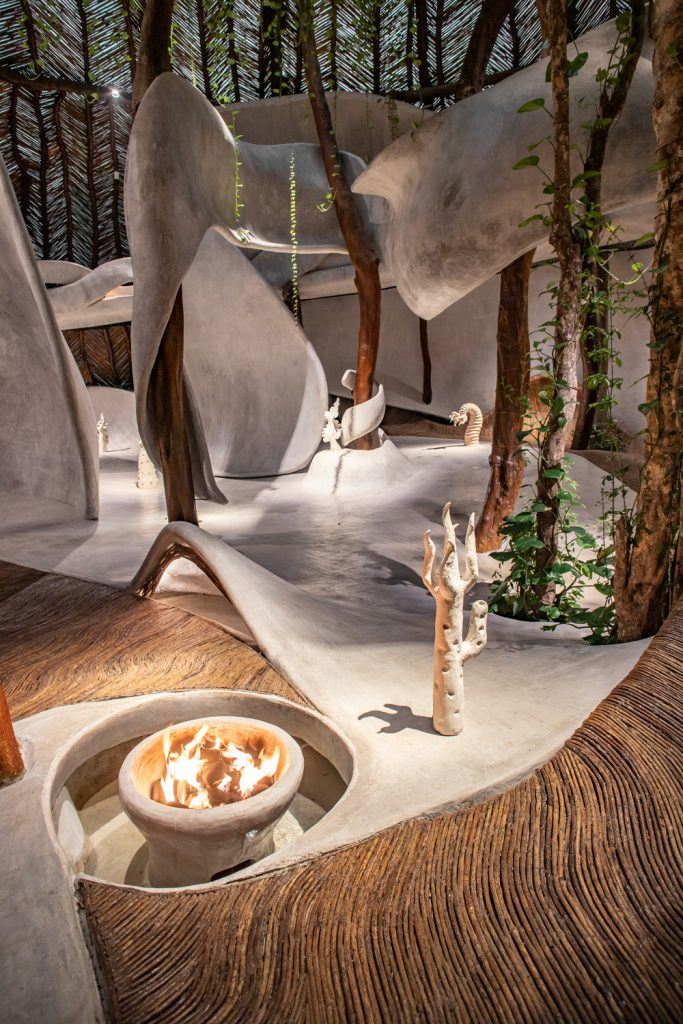
Nestled in the dense jungle on the coast of Mexico’s Yucatán Peninsula lies a contemporary art museum that is unlike any other. Dubbed Sfer Ik in Francisco Uh May, the otherworldly, 50-foot-high dome was created in perfect harmony with its lush surroundings, inviting barefoot visitors to wander across undulating vine-covered walkways and through sculptural concrete spaces punctuated with dozens of thousand-year-old trees. The organic design is the antithesis of a typical white-cube gallery, instead aiming to elevate the senses and inspire creativity through a connection with nature.
The spectacular feat of architecture is the brainchild of Jorge Eduardo Neira Sterkel, who goes simply by “Roth,” an Argentinian hotelier and self-taught architect who founded the Azulik resort, a luxury eco-hotel located 40 minutes away on the coast of Tulum, in 2005. The design is based on Fibonacci proportions, a sequence of numbers found in plant spirals. “I wanted to create an entirely new art experience,” says Roth.
The art space is the latest addition to Azulik’s growing complex that also includes Sfer Ik in Tulum, a smaller gallery located within the resort itself that garnered much interest when it opened last year. There, intricately cut branches provide the structure for an uneven canopy that covers the womb-like exhibition space. The inaugural exhibition was curated by Peggy Guggenheim’s great grandson Santiago Rumney Guggenheim and included such buzzworthy talents as Tatiana Trouve, Artur Lescher, and Margo Trushina.
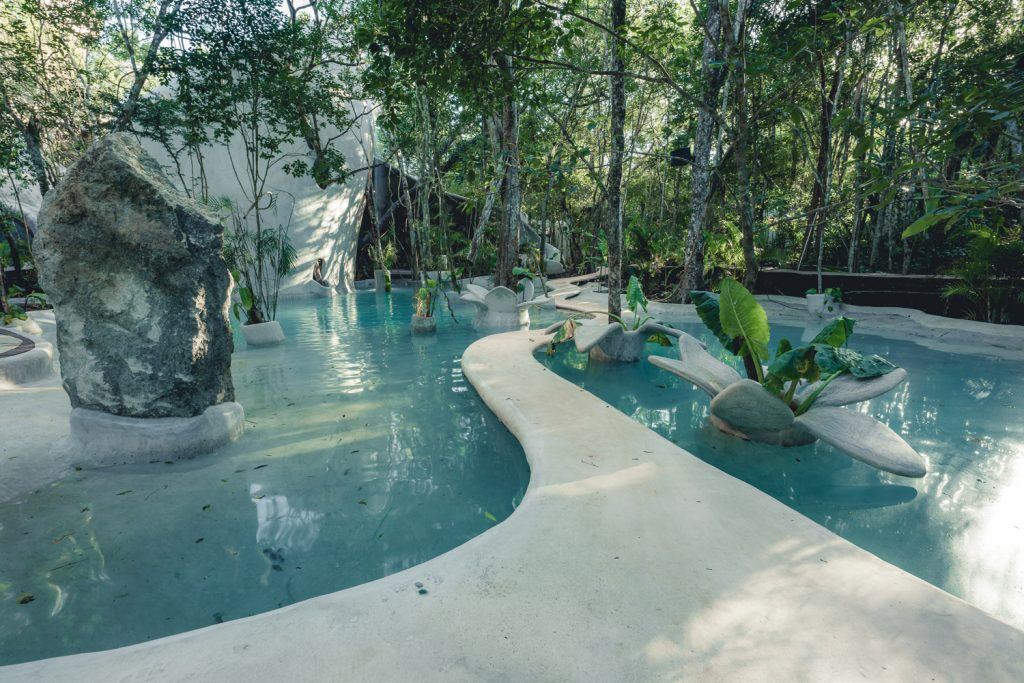
“In the old days, a museion was a place where you came to connect spiritually, which is what we are trying to achieve,” says Sfer Ik’s artistic director and curator, Claudia Paetzold. In place of security guards, audio guides, and lengthy wall texts, visitors are instead encouraged to connect with art at a deeper level. “You are barefoot, so you feel more vulnerable, and the floors are curved, so it forces you to be more conscious. The cushions placed throughout allow you to sit, relax, and contemplate,” adds Paetzold. “We want to engage all the senses.”
Recommended: 9 Remote Hotels That Are Well Worth the Journey
The programing encompasses a multidisciplinary approach and includes conferences, workshops for local children, and temporary site-specific projects. The only permanent work in the collection is a monumental woven tree titled Every Tree Is a Civilizing Entity by the celebrated Brazilian artist Ernesto Neto, who came to visit the space and resonated with the concept.
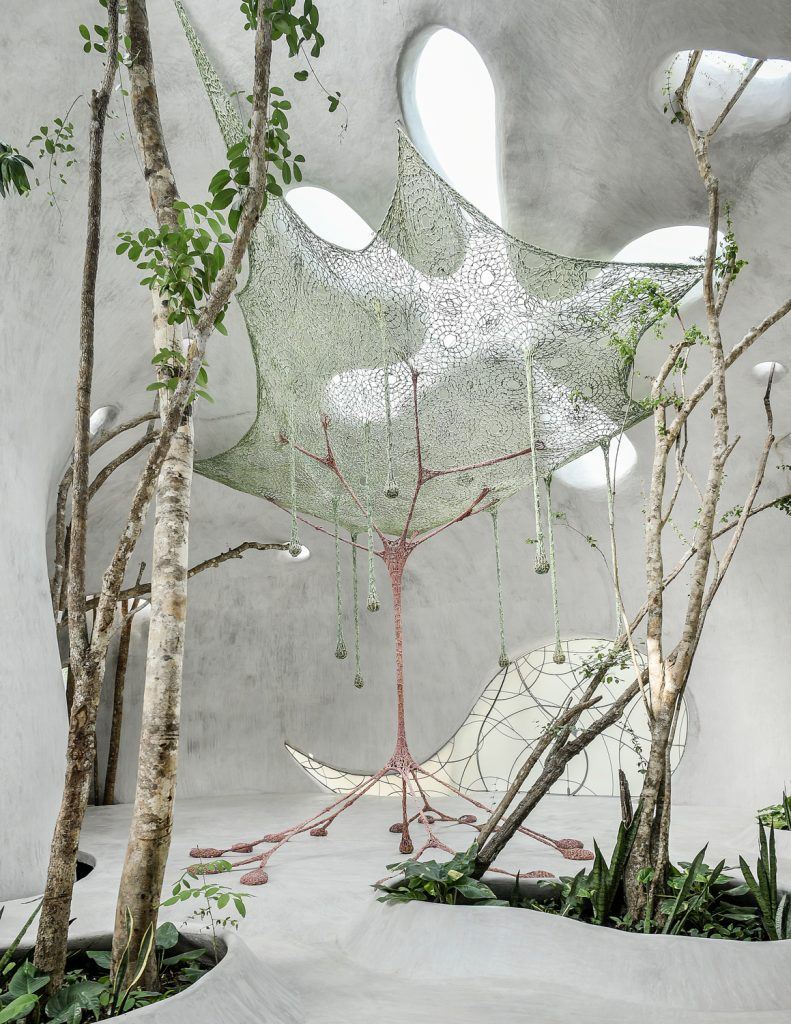
Nature is at the heart of every project. The current seaweed surplus in Tulum, for example, was the focus of the recent project at Sfer Ik in Uh May in September. Tulum is known as a bohemian jet-set travel haven, attracting visitors for its picture-perfect azure waters and white-sand beaches. But in 2015, an abundance of seaweed started washing over the shore. It was a threat to the tourism industry but also symbolized a much larger ecological issue.
Dubbed “Alliga,” the project included a three-day workshop where thought leaders, scientists, and activists from across the globe spent three days working together to solve the issue. Artists Cecilia Bengolea, Aki Inomata, and Sissel Tolaas were invited to create an exhibition of specially commissioned works to respond to the threat in creative ways. The Norwegian-born artist Tolaas is a scent expert, who explores how different smells can be described, remembered, and measured, and how the information in smells can be used. In the case of Tulum, Tolaas spent some days gathering scent molecules along the Riviera Maya from both healthy and dead algae before replicating them in her Berlin lab to create an immersive olfactory experience in the museum.
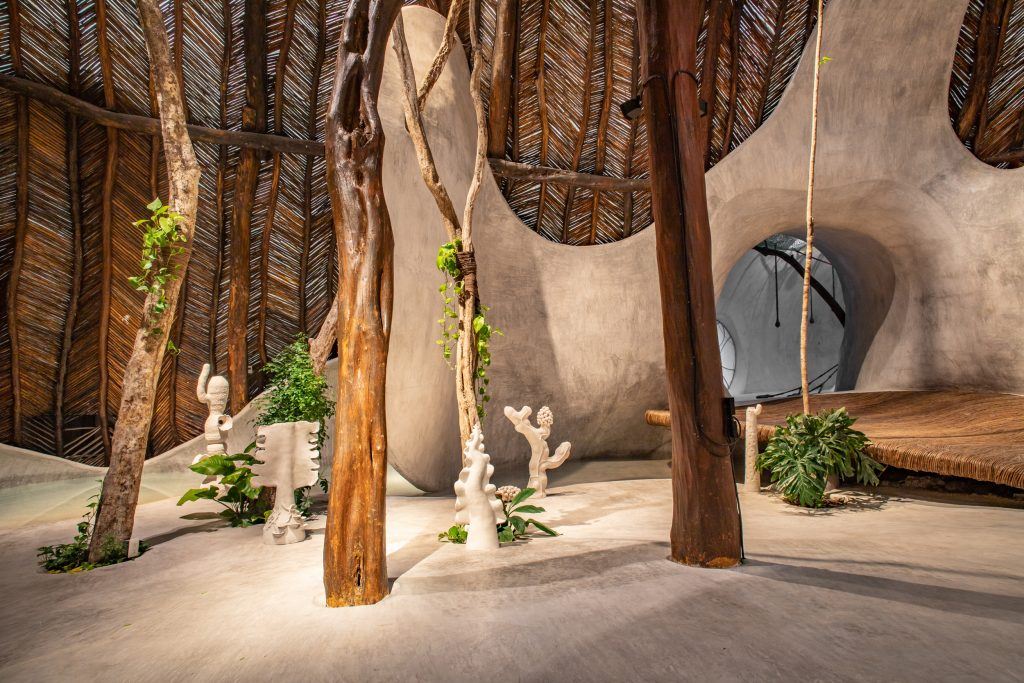
The Argentine artist Cecilia Bengolea, who is represented by Almine Rech, crafted stunning, otherworldly ceramic forms inspired by the fantastical creatures of the sea that were produced with Sfer Ik’s ceramic workshop. The opening night included a vibrant dance performance with a group of children titled óok’ot ha’, Mayan for “dance with the sea,” which mimicked the tides and shifts of the ocean. The costumes were all designed by Anikena, Azulik’s sustainable fashion brand.
Recommended: Tennessee’s New Blackberry Mountain Resort Mixes Art and Adventure
The noteworthy Japanese artist Aki Inomata, meanwhile, presented her celebrated video piece Think Evolution #1: Kiku-ishi (Ammonite), which was recently shown at the Triennale di Milano. The mesmerizing film explored the precarious relationship between man and nature with a cephalopod inhabiting a 3-D-printed replica of an ammonite shell.
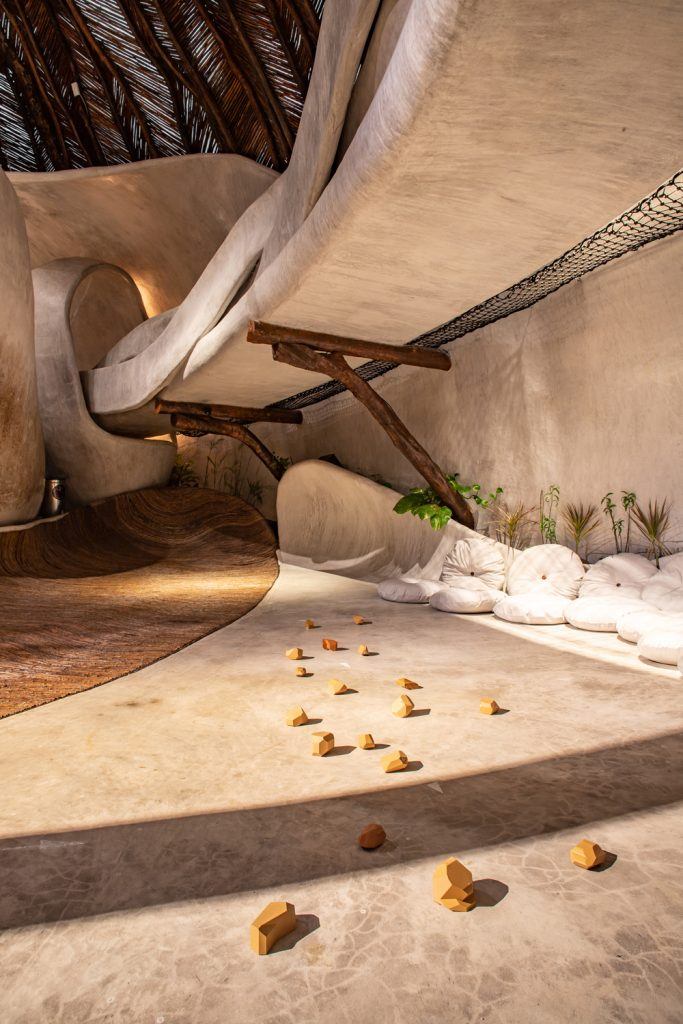
Azulik joins a growing list of museums in far-flung destinations that offer unique experiences for engaging with art. Take Naoshima, for example, the series of art spaces and installations in the South Island Sea of Japan, with its minimalist Tadao Ando architecture. Other examples include Inhotim in Brazil, where the pavilions and open-air galleries are dotted throughout the lush landscape, or Glenstone, built in 2018 to house the permanent collection of Emily and Mitchell Rales outside of Washington, D.C.
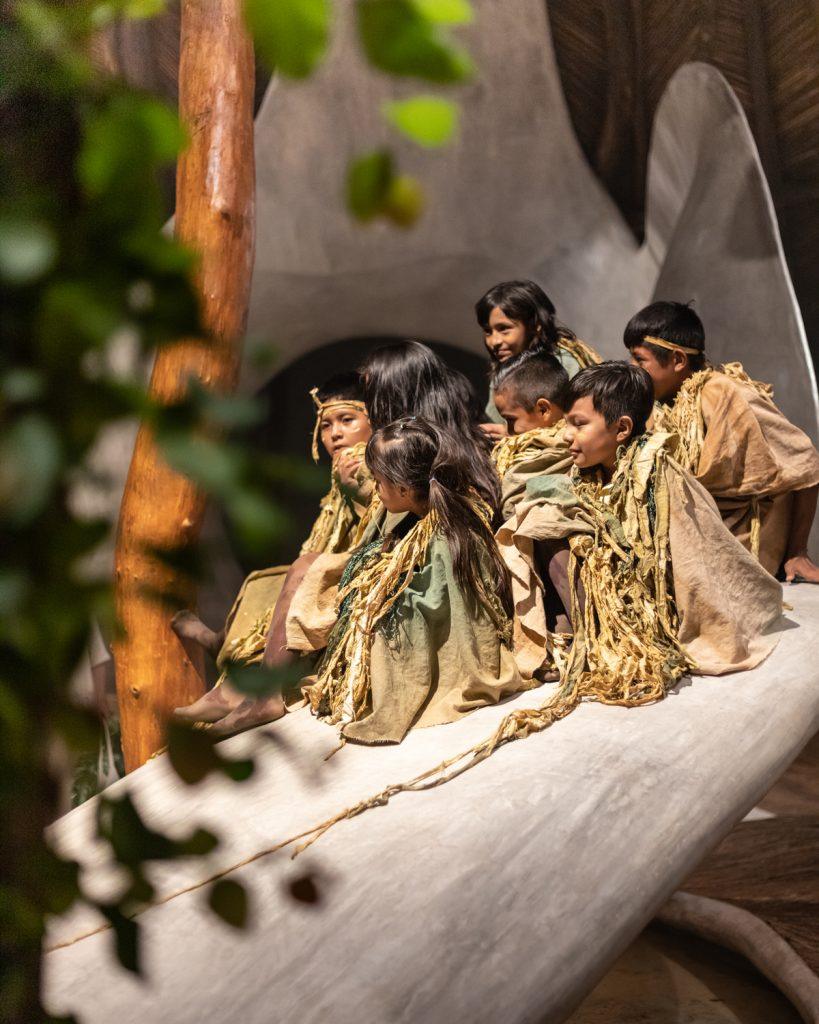
Come 2020, Azulik will launch a new hotel complex, artist residency program, and additional museum. There will be woven ramps and hanging nets suspended above tranquil pools of water with breathtaking views of the sea and ancient Coba ruins in the distance. “We never wanted just to showcase blue-chip art, but rather to invite artists to come here and be inspired. We will have artists, architects, musicians, and fashion designers collaborate with local craftspeople,” says Roth. “When you put different disciplines together in nature, something wonderful happens.”
“Alliga,” the current exhibition at Azulik’s Sfer Ik in Francisco Uh May, is on view September 5–January 31, 2020.






